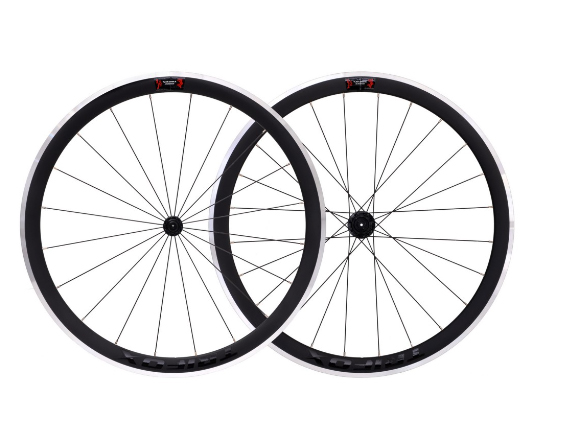
Selecting a good road wheelset is crucial for enhancing both speed and durability on your bike. The right wheelset can significantly impact your performance, whether you're racing or enjoying a long ride. Here’s how to choose the perfect road wheelset to meet your needs. First, consider the material of the wheelset. Alloy wheels, like those available on [Trifox Alloy Road Wheels], are a popular choice due to their excellent balance of weight, strength, and affordability. Alloy wheels are durable and can withstand the rigors of various road conditions, making them an ideal choice for many cyclists. Next, assess the wheel size and rim depth. The most common road bike wheel size is 700c, which offers a good blend of speed and stability. Rim depth plays a crucial role in aerodynamics: deeper rims (40mm and above) provide better aerodynamic benefits, reducing drag and helping you maintain higher speeds with less effort. However, deeper rims can be heavier and more susceptible to crosswinds. If you frequently ride in windy areas or prefer climbing, a shallower rim (20-30mm) might be more suitable. The spoke count is another important factor. Wheels with fewer spokes (16-24) tend to be lighter and more aerodynamic, making them ideal for racing. However, they may not be as robust as wheels with more spokes (28-36). If durability and strength are your primary concerns, especially if you ride on rough roads, opt for a higher spoke count. Hub quality also affects performance. High-quality hubs provide smoother rotation and greater reliability. Look for wheels with sealed bearings, which require less maintenance and offer better protection against dirt and moisture. Consider the weight of the wheelset. Lighter wheels accelerate faster and make climbing easier, but they should not compromise strength and durability. Alloy wheels strike a good balance here, offering lightweight properties without sacrificing robustness. Lastly, think about your budget. Investing in a quality wheelset can significantly enhance your riding experience. While high-end wheels can be costly, there are many excellent options available at different price points. The [Trifox Alloy Road Wheels] provide a range of choices that combine performance and value. In conclusion, selecting a good road wheelset involves considering material, size, rim depth, spoke count, hub quality, weight, and budget. By taking these factors into account, you can find a wheelset that boosts your speed and durability, ensuring a better ride. Happy cycling!
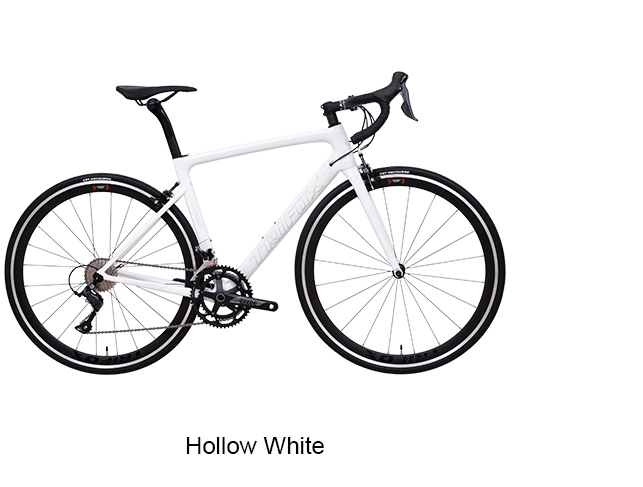
Tuning up your road bike is essential for maintaining peak performance and ensuring a smooth, efficient ride. Regular maintenance can also extend the lifespan of your bike. Here’s a step-by-step guide to tuning up your road bike for optimal performance. First, start with a thorough cleaning. Dirt and grime can affect the efficiency of your components. Use a gentle bike cleaner, water, and a soft brush to clean the frame, chain, gears, and other parts. This not only makes your bike look good but also helps you spot any potential issues. Next, check the tires. Ensure they are properly inflated to the recommended pressure, which can usually be found on the tire sidewall. Inspect for any cuts, wear, or embedded objects that might cause a flat. If your tires are worn out, consider upgrading to high-quality options available on [Trifox Road Bikes]. The drivetrain is crucial for smooth gear shifting and overall performance. Start by inspecting the chain for wear. A worn-out chain can damage the cassette and chainrings. Use a chain checker tool to measure wear and replace if necessary. Clean and lubricate the chain to ensure smooth operation. Check your brake system thoroughly. Inspect the brake pads for wear and replace them if they are too thin. Ensure the brake cables are in good condition and adjust the brake tension if needed. Properly functioning brakes are essential for safety and control. Next, adjust the gears. Use the barrel adjuster to fine-tune the derailleur's position, ensuring smooth and precise shifting. If the shifting is still not perfect, consider taking your bike to a professional for a detailed adjustment. Inspect all bolts and screws. Use a torque wrench to ensure that everything is tightened to the manufacturer’s specifications. Over-tightening or under-tightening can lead to component failure. Lastly, check the alignment of your wheels. Spin each wheel and observe if it wobbles side-to-side. If you notice a wobble, it might need truing. This is best done by a professional unless you have the right tools and expertise. In conclusion, regular tune-ups are key to keeping your road bike performing at its best. By following these steps, you can enjoy smoother rides and extend the life of your bike. For high-quality components and road bikes, visit [Trifox Road Bikes]. Happy riding!
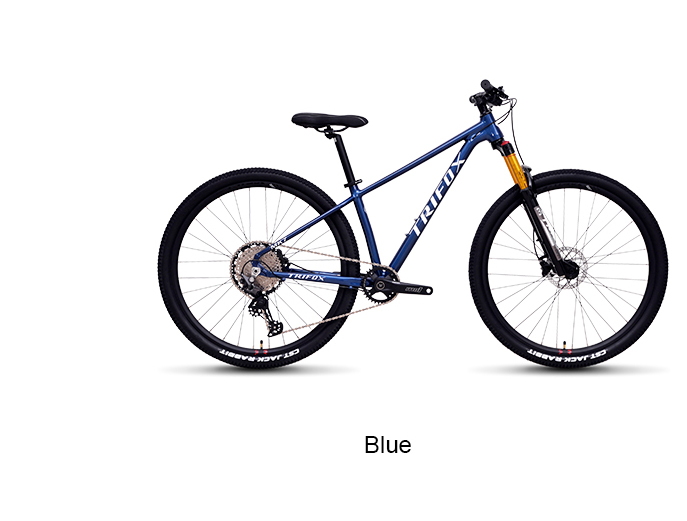
Choosing the best alloy frame for your bike is a crucial step in ensuring a comfortable and efficient ride. alloy frames, typically made from aluminum, offer a balance of strength, lightweight, and affordability. First, consider your riding style. Are you an avid mountain biker, a road cyclist, or a commuter? Each discipline has specific requirements that an alloy frame can address. For mountain biking, durability and shock absorption are key. The [Trifox Aluminum Mountain Bikes]offer robust construction ideal for rugged terrains. On the other hand, road cyclists might prioritize lightweight and aerodynamics, which aluminum frames also cater to effectively. Next, think about the frame geometry. The shape and angles of the frame can affect your riding posture and comfort. Mountain bikes generally have a more relaxed geometry, providing better control on rough trails. Road bikes feature a more aerodynamic geometry, placing the rider in a forward-leaning position for speed efficiency. Another essential factor is the frame size. An incorrectly sized frame can lead to discomfort and potential injury. Measure your inseam and use sizing charts provided by manufacturers like Trifox to find the right fit. Most brands provide detailed guides to help you choose the correct frame size based on your height and riding style. Additionally, check the weight of the frame. One of the advantages of alloy frames is their lighter weight compared to steel. This makes them easier to handle and maneuver, especially during climbs. However, ensure that the reduced weight doesn't compromise the frame's strength and durability. Lastly, consider your budget. Alloy frames are generally more affordable than carbon fiber, making them an excellent choice for those looking for quality without breaking the bank. The [Trifox Aluminum Mountain Bikes]offer various options that combine performance and value. In conclusion, choosing the best alloy frame for your bike involves understanding your riding needs, selecting the right geometry and size, considering the weight, and staying within your budget. With the right frame, you can enhance your riding experience, whether on rugged trails or smooth roads. Happy cycling!

Finding the right saddle is crucial for long-distance cycling comfort. Here's how to choose a saddle that keeps you comfortable on those extended rides. 1. Understand Saddle Types Saddles vary in shape, size, and padding. Performance saddles are streamlined with minimal padding for efficient pedaling, while comfort saddles offer more cushioning and a broader surface. 2. Measure Your Sit Bones Knowing the distance between your sit bones helps select a saddle that supports your pelvis properly. Use a sit bone measuring tool or visit a local bike shop for assistance. 3. Consider Saddle Material Carbon bike saddles, like those by Trifox, are lightweight and durable, providing excellent support. They often feature cutouts or channels to reduce pressure on sensitive areas, making them ideal for long rides. 4. Test Different Shapes The right saddle shape depends on riding position and personal preference. Flat saddles suit aggressive riding styles, while contoured saddles are better for more upright positions. 5. Adjust Saddle Position Proper saddle height and angle are vital for comfort. Ensure your saddle is level and at the correct height to avoid unnecessary strain on your knees and back. 6. Look for Additional Features Consider features like gel inserts or ergonomic designs that enhance comfort. Saddles with ventilation can also help reduce sweating and chafing on long rides. By considering these factors and testing different options, you can find the most comfortable saddle for your long-distance cycling needs. Explore Trifox’s range of carbon bike saddles here for high-quality options tailored to enhance your ride.
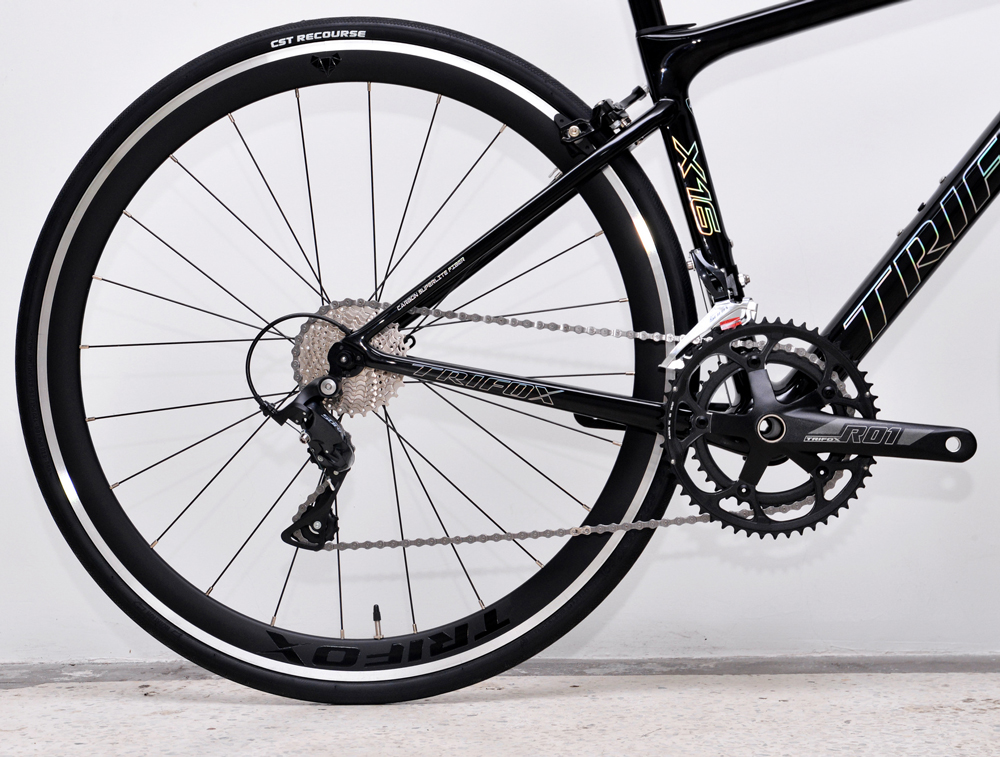
Selecting the right performance wheelset can drastically improve your bike's speed and efficiency. Here's how to make an informed choice to elevate your cycling experience. 1. Understand Your Riding Style Consider whether you're into road racing, mountain biking, or long-distance touring. Each discipline demands different wheel characteristics. Road cyclists often prefer lightweight, aerodynamic wheels, while mountain bikers need robust, durable options. 2. Focus on Material Carbon fiber wheelsets are a top choice for serious cyclists due to their lightweight and strength. They provide excellent stiffness and responsiveness, crucial for both acceleration and maintaining speed. However, they are more expensive than aluminum alternatives. 3. Consider Rim Depth Rim depth affects aerodynamics and handling. Deeper rims (50mm+) are more aerodynamic, making them ideal for flat courses and time trials. Shallow rims (30mm or less) are better for climbing due to their lighter weight and improved maneuverability. 4. Check Hub Quality High-quality hubs reduce rolling resistance and enhance overall performance. Look for sealed bearings that offer smooth rotation and require less maintenance. 5. Evaluate Spoke Count Wheelsets with fewer spokes are generally lighter and more aerodynamic but might sacrifice durability. Opt for higher spoke counts if you’re heavier or ride on rough terrains frequently. 6. Factor in Budget Performance wheelsets can be a significant investment. Balance your budget with your riding goals to find the best value without compromising essential features.
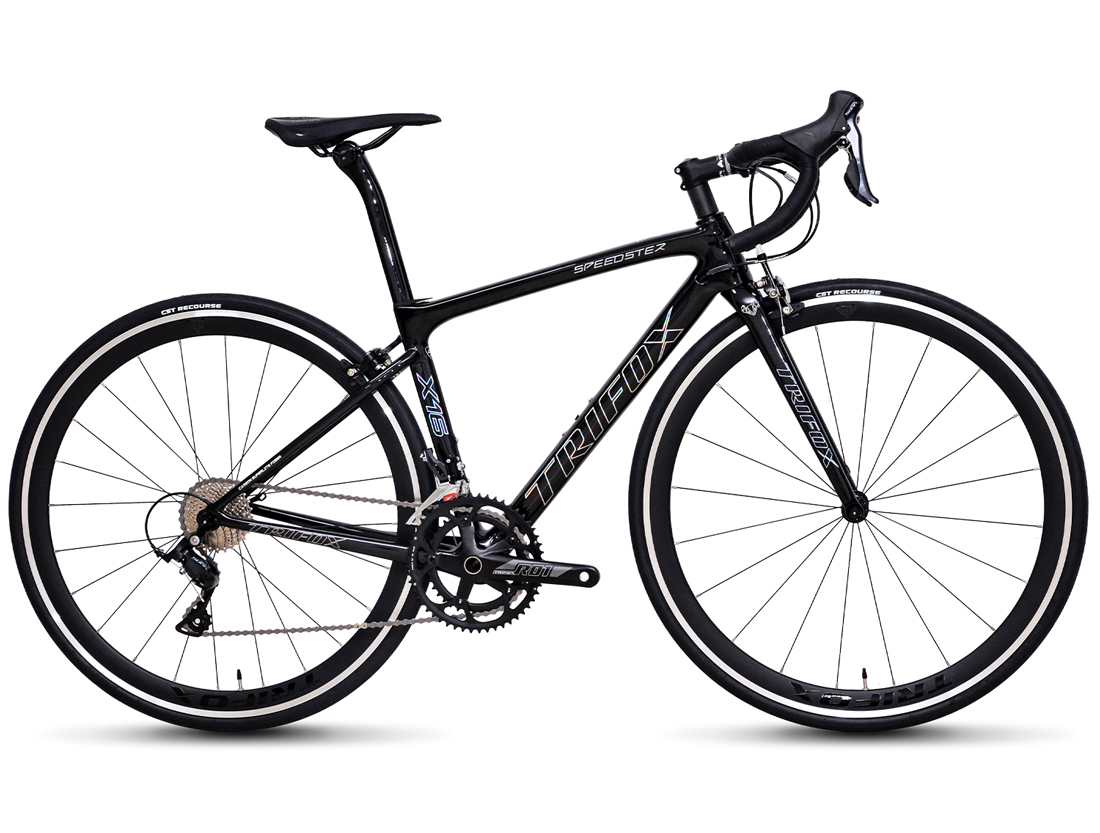
Installing the Ultra Light SF-QR 2.0 Quick Release on your bike may seem daunting, but with a few straightforward steps, you can ensure a secure and efficient setup. This quick release skewer, available at Trifox, offers lightweight performance and reliability ideal for serious cyclists. Here's a detailed guide to help you install it correctly. Step 1: Gather Your Tools Before starting, gather the necessary tools: Bike stand (optional but helpful)、Allen wrench or quick-release lever、Grease or lubricant Step 2: Prepare Your Bike Place your bike on a stable surface or bike stand. Make sure the bike is stable and won't tip over during the installation process. Step 3: Remove the Old Skewers If your bike already has skewers installed, you'll need to remove them first. Open the quick-release lever and unscrew the nut on the opposite side. Slide the skewer out of the hub and set it aside. Step 4: Apply Lubricant Apply a small amount of grease or lubricant to the threads of the quick-release skewer. This helps ensure smooth operation and prevents seizing. Step 5: Insert the Ultra Light SF-QR 2.0 Skewer Insert the new Ultra Light SF-QR 2.0 skewer through the hub axle. Ensure the lever side is positioned on the non-drive side of the bike (the side opposite the chain). Step 6: Attach the Nut Thread the nut onto the skewer from the drive side. Tighten the nut by hand until snug, but do not fully tighten yet. Step 7: Adjust the Lever Position Position the lever in an open position. The lever should be parallel to the fork or frame for proper alignment. Ensure the lever won’t interfere with any components when closed. Step 8: Close the Quick Release Close the quick-release lever. It should require firm pressure to close securely. If too loose, open the lever and tighten the nut slightly before closing again. A properly adjusted lever should leave an imprint on your palm when closed. Step 9: Check Alignment Ensure the wheel is properly aligned in the dropouts and centered between the forks or stays. Spin the wheel to check for any wobbling or misalignment. Step 10: Test and Secure Ensure the quick release is securely fastened by pressing down on the lever. There should be no movement in the wheel. For added safety, double-check that the lever is tightly closed and locked. By following these steps, you can easily install your Ultra Light SF-QR 2.0 Quick Release, ensuring a secure and smooth ride. Proper installation not only enhances performance but also ensures your safety on the road.
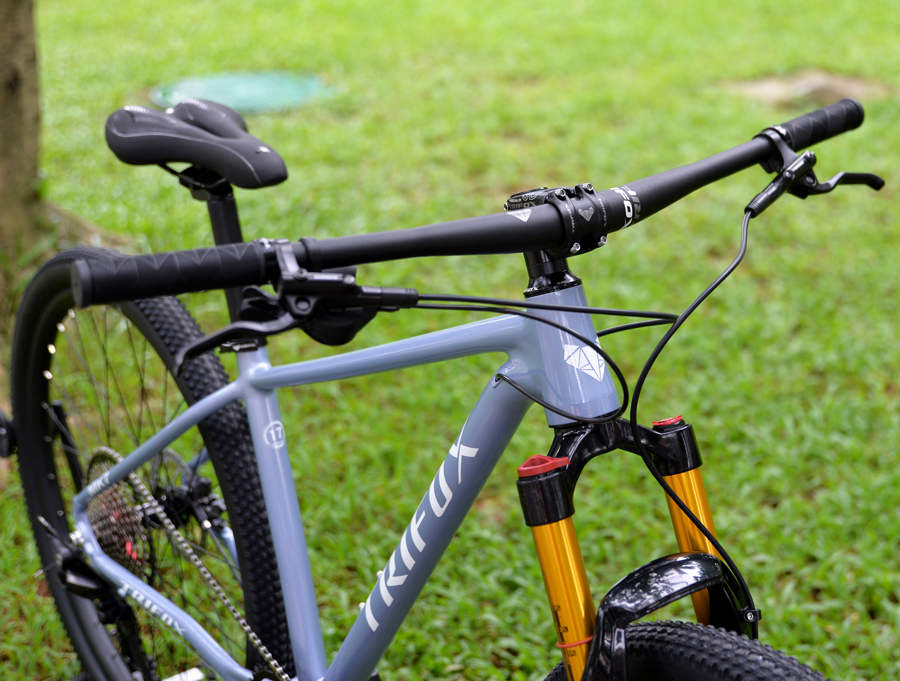
Choosing the right handlebar can significantly enhance your cycling experience, providing comfort, control, and efficiency. With options like the high-quality carbon bike handlebars from Trifox, it's essential to understand which type suits your riding style best. Here's a guide to help you make the perfect choice. 1. Identify Your Riding Style Your riding style is the first consideration when selecting a handlebar. Are you into road racing, mountain biking, or casual commuting? Each style demands different handlebar characteristics for optimal performance. Road Racing: For speed and aerodynamics, drop bars are usually preferred. They offer multiple hand positions and reduce drag;Mountain Biking: Flat or riser bars are ideal for control and stability on rugged trails;Commuting: Comfort and ease of use are key, making flat bars or cruiser bars a good choice. 2. Consider the Material Carbon handlebars, like those offered by Trifox, provide several advantages. They are lightweight, strong, and absorb vibrations better than aluminum, offering a smoother ride. This is particularly beneficial for long-distance cyclists and competitive racers. 3. Understand Handlebar Dimensions Width: A wider handlebar offers more control, especially in technical terrains, while a narrower bar can be more aerodynamic;Drop and Reach: For drop bars, consider the drop (vertical distance) and reach (horizontal distance). A deeper drop allows for a more aerodynamic position, while a shorter reach is more comfortable for casual rides;Rise: For flat and riser bars, the rise (height difference between the center of the bar and the ends) affects your riding posture. More rise means a more upright and comfortable position. 4. Test Different Shapes Handlebars come in various shapes to suit different preferences: Drop Bars: Ideal for road cyclists needing aerodynamic positions.Flat Bars: Common in mountain bikes for improved control;Riser Bars: Provide a higher position, enhancing visibility and comfort;Bullhorn Bars: Offer an aggressive position suitable for time trials and track racing. 5. Ergonomics and Comfort Pay attention to ergonomics. Some handlebars have ergonomic bends or specific shapes designed to reduce fatigue and increase comfort on long rides. Carbon bars, such as those available from Trifox, often include these features, making them a great investment for serious cyclists. 6. Installation and Adjustments Ensure proper installation and adjustment. Handlebars need to be securely fitted and adjusted to your preference. Seek professional help if necessary to avoid any mishaps that could affect your ride quality or safety. Conclusion Choosing the perfect cycling handlebar is crucial for enhancing your cycling experience. With options like the Trifox carbon bike handlebars, you can find the balance between weight, strength, and comfort tailored to your riding style. Take the time to assess your needs, try different options, and invest in the best handlebar for a more enjoyable and efficient ride. Explore Trifox's range of carbon bike handlebars here.
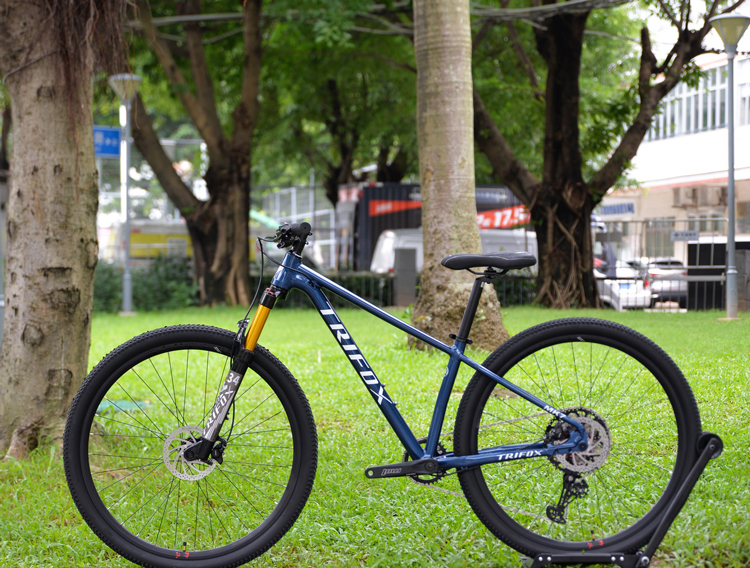
Conquering mountain trails demands not only skill but also the right equipment. The Trifox PeakTrail Xtreme bike, with its top-tier components and design, is engineered to help you tackle the roughest terrains with confidence and style. Here's how you can master mountain trails with this exceptional bike. 1. Understand Your Equipment The PeakTrail Xtreme bike features a TRIFOX suspension fork, which plays a crucial role in handling the various obstacles you'll encounter on the trail. Its butted aluminum frame, combined with hydroformed top and downtubes, offers both durability and a sleek appearance. This frame is designed for higher deformation resistance and tensile strength, ensuring reliability on challenging terrains. 2. Optimize Your Gear Shifting Equipped with the SHIMANO DEORE M6100 12-speed Groupset, the PeakTrail Xtreme provides a wide range of gears to handle steep climbs and fast descents efficiently. Knowing when and how to shift gears can significantly impact your ride. Practice smooth transitions between gears to maintain momentum and avoid unnecessary strain on your bike’s components. 3. Leverage the 1x Drivetrain The 1x Shimano drivetrain on the PeakTrail Xtreme simplifies gear shifting and reduces the chances of chain drops, allowing you to focus more on the trail ahead rather than managing multiple gears. This simplicity doesn’t compromise performance but rather enhances reliability and ease of use, especially useful in technical sections. 4. Utilize the Lightweight Design One of the standout features of the PeakTrail Xtreme is its lightweight construction, which allows for faster acceleration and easier maneuverability. This is particularly advantageous when navigating sharp turns or climbing steep inclines. Use this to your advantage by practicing quick sprints and agile movements. 5. Regular Maintenance Maintaining your PeakTrail Xtreme bike is essential for optimal performance. Regularly check the suspension fork, drivetrain, and brakes. Proper maintenance ensures that your bike remains reliable and ready for any trail. 6. Benefits Beyond the Bike When you purchase the PeakTrail Xtreme bike, Trifox offers top-quality items, 24/7 live chat support, fast and reliable delivery options, and secure payment methods. These additional benefits ensure a seamless purchasing experience, allowing you to focus on enjoying your ride. Mastering mountain trails requires both skill and the right bike. The PeakTrail Xtreme, with its robust features and performance-oriented design, is your ideal partner for any mountain adventure. Start exploring with confidence and elevate your riding experience today. Learn more and get your PeakTrail Xtreme bike here.
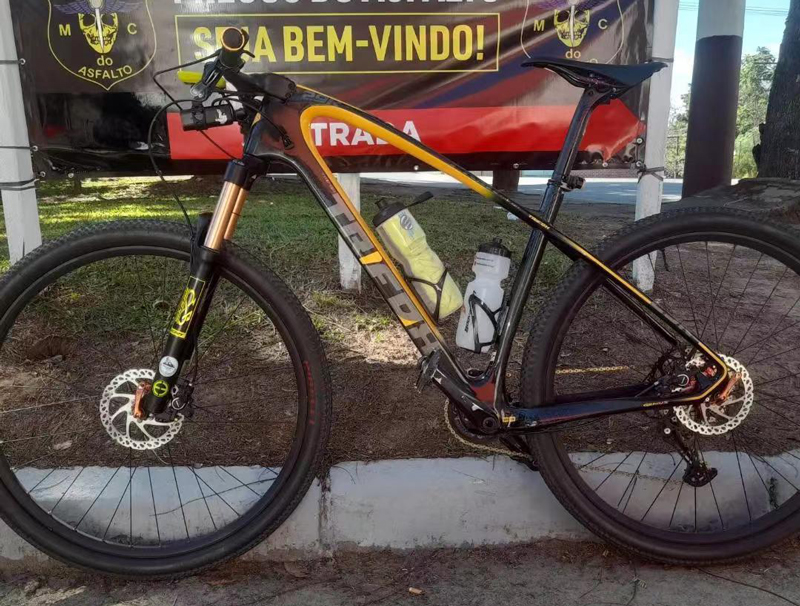
Achieving carbon painting techniques can transform your bike, car, or any other equipment into a sleek and modern masterpiece. Whether you’re looking to refurbish an old item or customize a new one, mastering carbon painting can give your project a professional finish. Understanding Carbon Painting Carbon painting techniques involve creating a faux carbon fiber look using paint. This technique mimics the appearance of carbon fiber, offering a high-tech, stylish finish without the need for actual carbon fiber materials. It’s commonly used on bikes, automotive parts, and various accessories. Materials Needed Primer: Ensures proper adhesion of the paint. Base Coat: Typically black, this serves as the foundation color. Carbon Fiber Decal Sheet or Mesh: Creates the carbon fiber pattern. Transparent Top Coat: Protects the paint and adds a glossy finish. Sandpaper: For prepping the surface (various grits). Masking Tape and Paper: To protect areas you don’t want painted. Spray Gun or Aerosol Spray Paint: For applying the primer, base, and top coats. Protective Gear: Gloves, mask, and goggles. Step-by-Step Guide 1. Preparation Clean the Surface: Thoroughly clean the item to remove any dirt, grease, or residue. Use a degreaser if necessary;Sanding: Sand the surface with fine-grit sandpaper (e.g., 400-600 grit) to create a smooth, matte finish. This helps the primer adhere better;Masking: Use masking tape and paper to cover areas you don’t want to be painted. 2. Priming Apply Primer: Using a spray gun or aerosol can, apply a coat of primer evenly over the surface. Allow it to dry completely;Sand Again: Lightly sand the primed surface with fine-grit sandpaper to smooth out any imperfections. Wipe away dust with a clean cloth. 3. Base Coat Application Apply Base Coat: Spray the black base coat evenly over the primed surface. Multiple thin coats are better than one heavy coat to avoid runs and drips. Let each coat dry thoroughly before applying the next. 4. Creating the Carbon Fiber Pattern Position Decal or Mesh: Once the base coat is dry, carefully position the carbon fiber decal sheet or mesh over the surface;Spray Over Mesh: Lightly spray a contrasting color (often silver or dark gray) over the mesh to create the carbon fiber effect. Remove the mesh carefully before the paint dries. 5. Top Coat Application Apply Top Coat: Once the pattern is set and dry, apply several coats of a clear top coat to protect the paint job and add shine. Allow each coat to dry thoroughly before applying the next. Final Touches Curing Time: Let the painted item cure for several days in a dust-free environment to ensure the paint fully hardens;Polishing: After curing, you can polish the surface to enhance the gloss and smoothness further. Tips for Success Use Quality Materials: Investing in high-quality paints, primers, and top coats will yield the best results;Practice Patience: Rushing through the steps can lead to imperfections. Take your time with each layer and let it dry completely;Proper Ventilation: Work in a well-ventilated area to avoid inhaling fumes from the paints and solvents. Conclusion Mastering carbon painting techniques can give your projects a sleek, professional look that stands out. With careful preparation, precise application, and attention to detail, you can achieve a stunning carbon fiber effect that rivals the real thing.

















